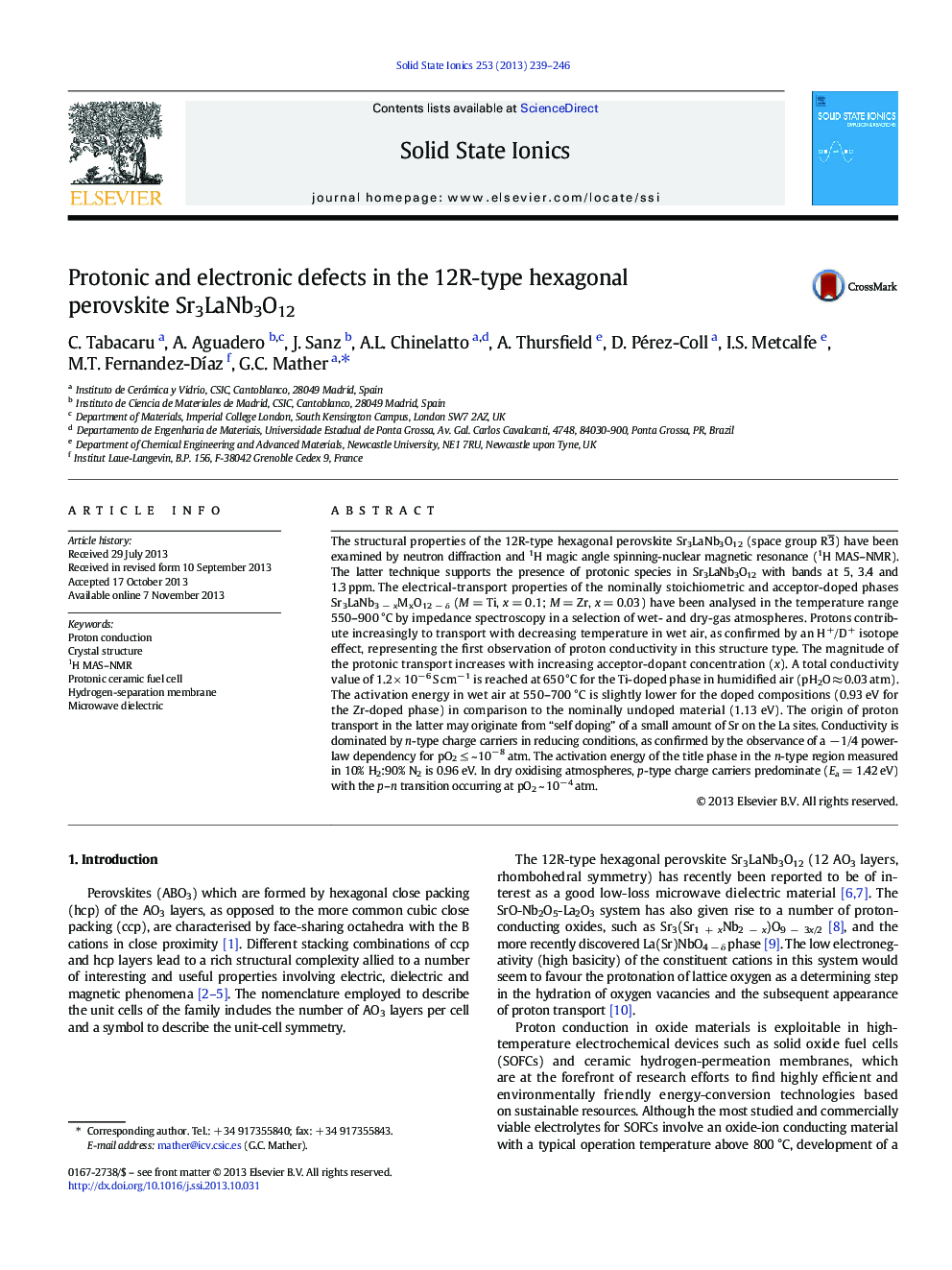| کد مقاله | کد نشریه | سال انتشار | مقاله انگلیسی | نسخه تمام متن |
|---|---|---|---|---|
| 1297966 | 1498289 | 2013 | 8 صفحه PDF | دانلود رایگان |

• Proton transport is observed in Sr3LaNb3O12 in wet oxidising conditions.
• 1H MAS-NMR and an H+/D+ conductive isotope effect support the presence of protons.
• Proton transport increases with increasing acceptor-dopant concentration.
• Electrical conductivity is n-type in reducing conditions.
The structural properties of the 12R-type hexagonal perovskite Sr3LaNb3O12 (space group R3¯) have been examined by neutron diffraction and 1H magic angle spinning-nuclear magnetic resonance (1H MAS–NMR). The latter technique supports the presence of protonic species in Sr3LaNb3O12 with bands at 5, 3.4 and 1.3 ppm. The electrical-transport properties of the nominally stoichiometric and acceptor-doped phases Sr3LaNb3 − xMxO12 − δ (M = Ti, x = 0.1; M = Zr, x = 0.03) have been analysed in the temperature range 550–900 °C by impedance spectroscopy in a selection of wet- and dry-gas atmospheres. Protons contribute increasingly to transport with decreasing temperature in wet air, as confirmed by an H+/D+ isotope effect, representing the first observation of proton conductivity in this structure type. The magnitude of the protonic transport increases with increasing acceptor-dopant concentration (x). A total conductivity value of 1.2 × 10− 6 S cm− 1 is reached at 650 °C for the Ti-doped phase in humidified air (pH2O ≈ 0.03 atm). The activation energy in wet air at 550–700 °C is slightly lower for the doped compositions (0.93 eV for the Zr-doped phase) in comparison to the nominally undoped material (1.13 eV). The origin of proton transport in the latter may originate from “self doping” of a small amount of Sr on the La sites. Conductivity is dominated by n-type charge carriers in reducing conditions, as confirmed by the observance of a − 1/4 power-law dependency for pO2 ≤ ~ 10− 8 atm. The activation energy of the title phase in the n-type region measured in 10% H2:90% N2 is 0.96 eV. In dry oxidising atmospheres, p-type charge carriers predominate (Ea = 1.42 eV) with the p–n transition occurring at pO2 ~ 10− 4 atm.
Journal: Solid State Ionics - Volume 253, 15 December 2013, Pages 239–246